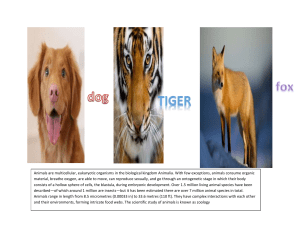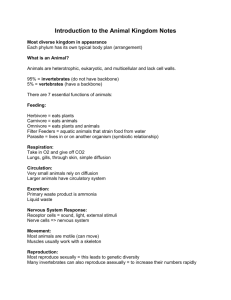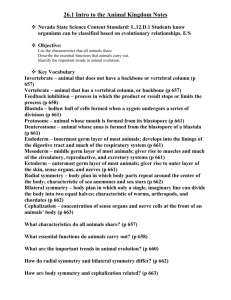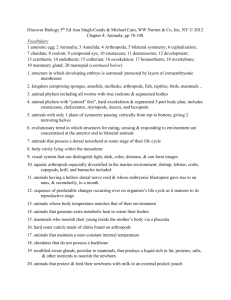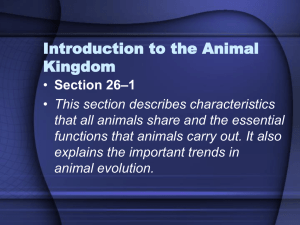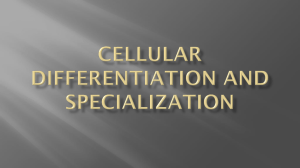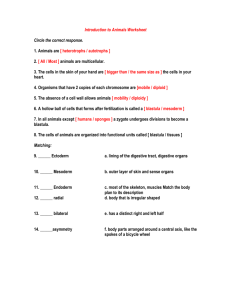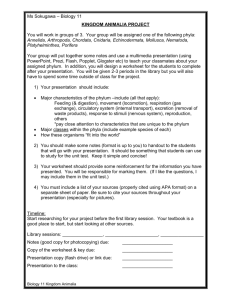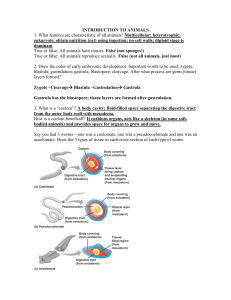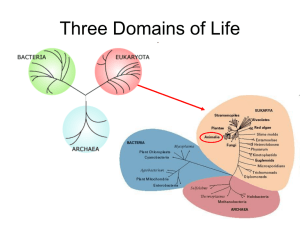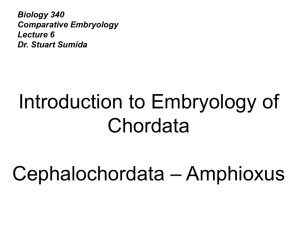Kingdomanimalia
advertisement
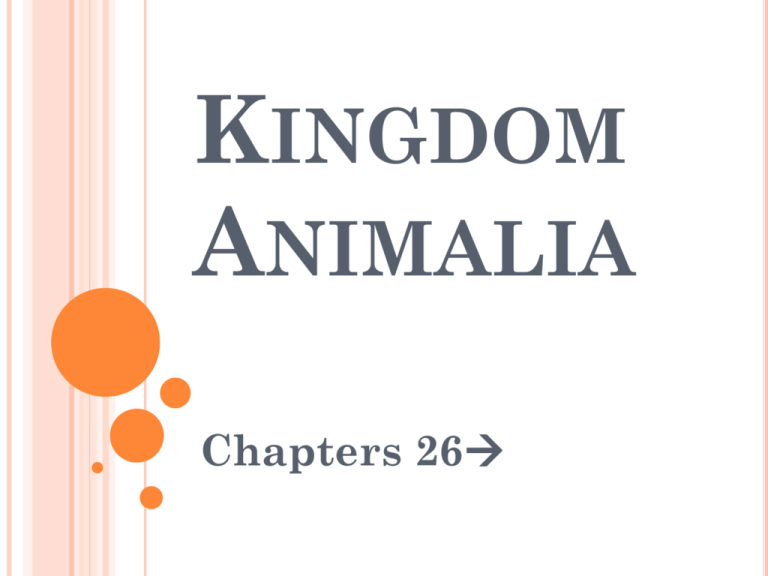
KINGDOM ANIMALIA Chapters 26 CHARACTERISTICS OF COMPLEX ANIMALS: 1) Highly specialized cells and body tissues 2) Bilateral body symmetry 3) Front end or head with sense organs (cephalization) 4) A body cavity SPECIMENS ACTIVITY: For each of the numbered specimens, tell me: A) What is its name(s)? B) Type of body symmetry? (none, radial, bilateral) C) Is there cephalization? D) Complex or simple animal? E) Which phylum does it belong to? F) Can you identify the class? Order? Etc Appendix “E” starting on page 1074 may help Also, chapters 26 may help you as well *On loose-leaf, with you and your partner’s name INTRODUCTION TO KINGDOM ANIMALIA: Most diverse kingdom in terms of physical appearance Each phylum has its own body plan, meaning: unique anatomy (organization and type of tissues) Over 95% of all animals are invertebrates Only about 5% are vertebrates All animals have the following characteristics: a) heterotrophic b) multicellular c) eukaryotic cells with no cell wall ALL ANIMALS CARRY OUT THE FOLLOWING PROCESSES: a) Feeding b) Respiration c) Circulation d) Excretion e) Response (to stimuli) f) Movement g) Reproduction What are four characteristics that “complex animals” have in common? “Thinking visually” (Page 663) Intro to animals worksheets EARLY DEVELOPMENT IN ANIMALS: Zygote = egg fertilized by sperm Blastula = hollow ball of cells (formed by dividing zygote) Blastopore = opening (inner tube) in the blastula EARLY DEVELOPMENT IN ANIMALS: Protostome = an animal whose blastopore becomes their mouth (‘proto’ ‘first’, and ‘stoma’ ‘mouth’) Deuterostome = an animal whose blastopore becomes their anus (‘deutero’ ‘second’, ‘stoma’ ‘mouth’) *All vertebrates are deuterostomes *Answer question #4 on page 663 EARLY DEVELOPMENT IN ANIMALS: Endoderm = ‘inner skin’ Forms digestive tract + respiratory system Mesoderm = ‘middle skin’ Forms muscles, circulatory, reproductive, excretory systems Ectoderm = ‘outer skin’ Forms sense organs, nerves, outer layer of skin PRESENTATIONS: GENERAL COMMENTS Speak clearly (volume and speed) Show interest Make eye contact Avoid reading (power point, not power paragraph) Both presenters should speak Don’t run away and sit down while people are asking questions Know your material (meanings and pronunciations) If you don’t understand it, don’t include it in the presentation-or (even better) find out what it means Proofread for errors (spelling, missing words) Include sources of information Include information asked for in rubric given by the teacher FOR THE TEST: Notes copied from power point Handout assignment for section 26-1 Chart of animal groups’ identifying characteristics Crossword review puzzle will help also

